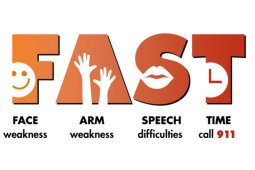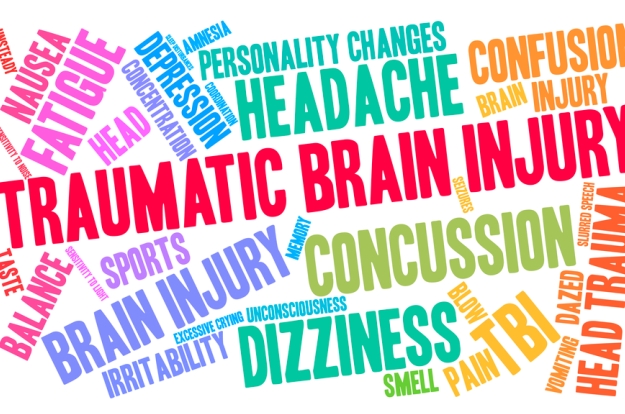Categories
- Bariatric Surgery (11)
- Black Fungus (5)
- Bone Marrow transplant (3)
- Brain Tumor Surgery Navigation Technology (20)
- Cardiac Surgery (66)
- Cardiology (97)
- Computer navigation technology for joint replacements (20)
- Covid Vaccination (17)
- Critical Care (2)
- Dental (19)
- Dermatology (31)
- Dialysis Support Group - “UTSAAH” (11)
- Dietitian (33)
- Emergency Medicine (4)
- Emotional Health (11)
- Endocrinology (33)
- ENT (20)
- Gastroenterology and GI Surgery (53)
- General and Laparoscopic Surgery (21)
- General Surgery (4)
- Gynecology & Obstetrics (183)
- Hematology (20)
- Internal Medicine (294)
- Kidney Transplant (50)
- Kidney Transplantation (20)
- Lung Cancer (8)
- Minimal Invasive Surgery (1)
- Mother & Child (20)
- mucormycosis (5)
- Nephrology (61)
- Neurology (147)
- Neurosurgery (68)
- Nutrition and Dietetics (107)
- Omicron Variant (1)
- Oncology (288)
- Ophthalmology (10)
- Orthopaedics & Joint Replacement (86)
- Paediatrics (59)
- Pediatric Nephrology (3)
- Physiotherapy (5)
- Plastic & Reconstructive Surgery (6)
- Psychiatry and Psychology (90)
- Psychologist (28)
- Pulmonology (72)
- Rheumatology (13)
- Spine Services (21)
- Transradial Angioplasty (16)
- Urology (84)
Query Form
Posted on Apr 19, 2022
Rapid Response to Stroke Reduces Long-Term Damage
Please give an overview of neurology and neurological disorders in India ?
Neurology is growing at a slow pace but certainly the scope has widened and diversified. Today there are around 1000 qualified neurologists in India. Most of them are confined to the metro cities. leaving a great chunk of the population unattended or inadequately represented by general practitioners.
Advanced imaging, electrodiagnostic investigations, improved blood tests and other technological breakthroughs have paved the way for enhanced diagnostic accuracy leading to better understanding and treatment of neurological disorders.
Brain is an incredibly complex and an isolated organ. How far have we deciphered the mysteries ?
The more we try to unravel the mysteries of the brain, the more it eludes us. We are still squinting in the primitive ages as far as brain is concerned. However, we have made significant headways in different directions and scientists are struggling to solve the countless puzzles. The never ending neurons, for instance, and their pathways, connectivity are simply baffling.

Headaches are so universal and a good many triggers are there. How do you ascertain the cause and determine the cure ?
Headache is very common and it comes in a diverse variety. There are hundreds of diagnostic headache categories. This pain is the outcome of interaction between the brain, blood vessels and the surrounding nerves.
The causes, again, are simply countless. The pain may be due to a simple blow or injury, or may emerge as an outcome of illness, infection or other conditions that may precipitate a pain. Add to this, environmental factors, lifestyle and the maze of chemicals surrounding us.
Tension headaches are the outcome of emotional outburst or stress emanating from work, family, friends, medication, change in sleep pattern, posture problem, etc to name a few. Migraines are very common among females. It is genetic in nature and 18- 20 percent females in the age group of 15-45 are prone to migraine.
Once a correct diagnosis is made, the treatment plan is conveniently chalked out. It all begins with the case diary which makes it easier for the neurologist to decode the headache and arrive at a conclusion.
What is epilepsy? Any statistics on Indians suffering from this disorder ?
The prevalence rate of epilepsy is about 5 per 1000 in India. However, due to lack of neurologists and the stigma attached to it, there are many who prefer to hide it rather than comefoward for treatment. Many think that it is supernatural and treatment is neither required nor possible. However, these myths need to be dispelled and people who witness successful treatments feel encouraged to seek medical advice.
Epilepsy or seizure disorder is a condition affecting the nervous system. An epileptic seizure results from a sudden electrical outburst in the brain that leads to a changed pattern by way of behaviour, consciousness movement or sensation. Drugs are capable of controlling 70 percent of people with epilepsy. At times, surgery is the solution and some neurologists combine surgery with medication.
How common is Parkinson’s Disease in India ?
Age related prevalence of Parkinson’s in India is around 70 per 100,000. Compared to the West, Parkinson’s disease in India is relatively less. However, in days to come when the aging pattern of the Indian population changes, there may be greater number of those affected.
Parkinson’s disease affects both, men and women but men are more prone to progressive loss of neurons or the dopamine brain cells, produced in the striatum. The symptom begins when more than 50 to 80 percent of dopamine neurons have died. There are a variety of triggers but it is widely accepted that genetics and environmental factors merge to set the disease in motion.
Drugs and surgical procedures (deep brain stimulation)are the two options for Parkinson’s disease. In deep brain stimulation, the neuro-surgeons implant electrodes into a specific part of the brain.
Some of the latest approaches to treating stroke ?
The average stroke rate in India is around 150 per 100,000 which is similar to the developed nations. Ischemic strokes account for more than three fourths of the strokes in India.
Fast and early treatment is the need of the hour. First it needs to be ascertained if the stroke is ischemic (blocking an artery) or hemorhagic( involves bleeding into the brain).
Emergency treatment commences within 3 to 4.5 hours with clot busting drugs TPA (Tissue Plasminogen Activator) given intravenously. Quicker the treatment, better and greater the chances of long term outcome. Doctors may also decide upon opening up the artery by intra arterial interventions.
To decrease the risk of having another stroke, the doctor may recommend a procedure to open up neck artery that’s moderately to severely narrowed by plaque. This may be achieved by Carotid endarterectomy( removal of fatty deposits or plaques from the carotid arteries) or suggest angioplasty and stents ( insertion of a catheter with a stent that is guided to the blocked carotid artery).
How prevalent is Multiple sclerosis and Dementias in India ?
This auto immune disorder was once believed to be uncommon not only in India but Asia at large. Today it is widely recognised and it is as common in India but not at par with the West. Increasing incidences and understanding is attributed to greater application of MRI scans to evaluate neurological disorders. Now the awareness is increasing and treatments are forthcoming.
Dementia comes with advancing age and it is increasing rapidly as the living population is aging. Treatment can slow down the disease and more important is the aspect of counselling for the care takers.
How do you resolve the dilemma of brain dead? Indian definition, legal aspects and layman’s approach ‘ Should we stop all care once the patient is brain dead?’
According to The Transplantation of Human Organs Act, 1994, ‘Deceased person’ is defined as a person in whom permanent disappearance of all evidence of life occurs, by reason of brain-stem death or in a cardio-pulmonary sense at any time after live birth has taken place. Further, it goes on to state that ‘brain-stem death’ suggests the stage at which all functions of the brain stem have permanently ceased.
Once brain-stem death has been diagnosed by an authorised team using specified criteria, the dead person’s organs can be removed for transplantation provided legally valid consent for this is available.
‘Should we stop all care?’ is a typical dilemma that stems from the definition. It sounds as if there is more than one kind of death. The word ‘brain death’ was included to facilitate organ transplantation.
The pain for the relatives is prolonged for days and weeks till the heart finally stops and the oscilloscope defines a straight line. The family hopes, seeks consultations and pays huge sums in the ICU in the expectation that the patient will come back to life.
Please tell us about the team of doctors in the Neurosciences at Paras Hospitals, Gurgaon?
We are a team of five neurologists, each specializing in one aspect of neurology and focused for appropriate approach in his respective field. The highly skilled team of neuro surgeons, neurologists, neuroanesthetists, neuro radiologists, psychiatrists and experts in critical care work in tandem to provide the best possible healthcare services.
How different is the Neuro ICU at Paras Hospital?
The eight bedded Neuro ICU/Stroke unit is equipped with latest ventilators, monitors & defibrillators and is manned 24 x 7 by Neurointensivists. There is facility of continuous monitoring of brain function and vital parameters with the state-of-the-art equipments.



